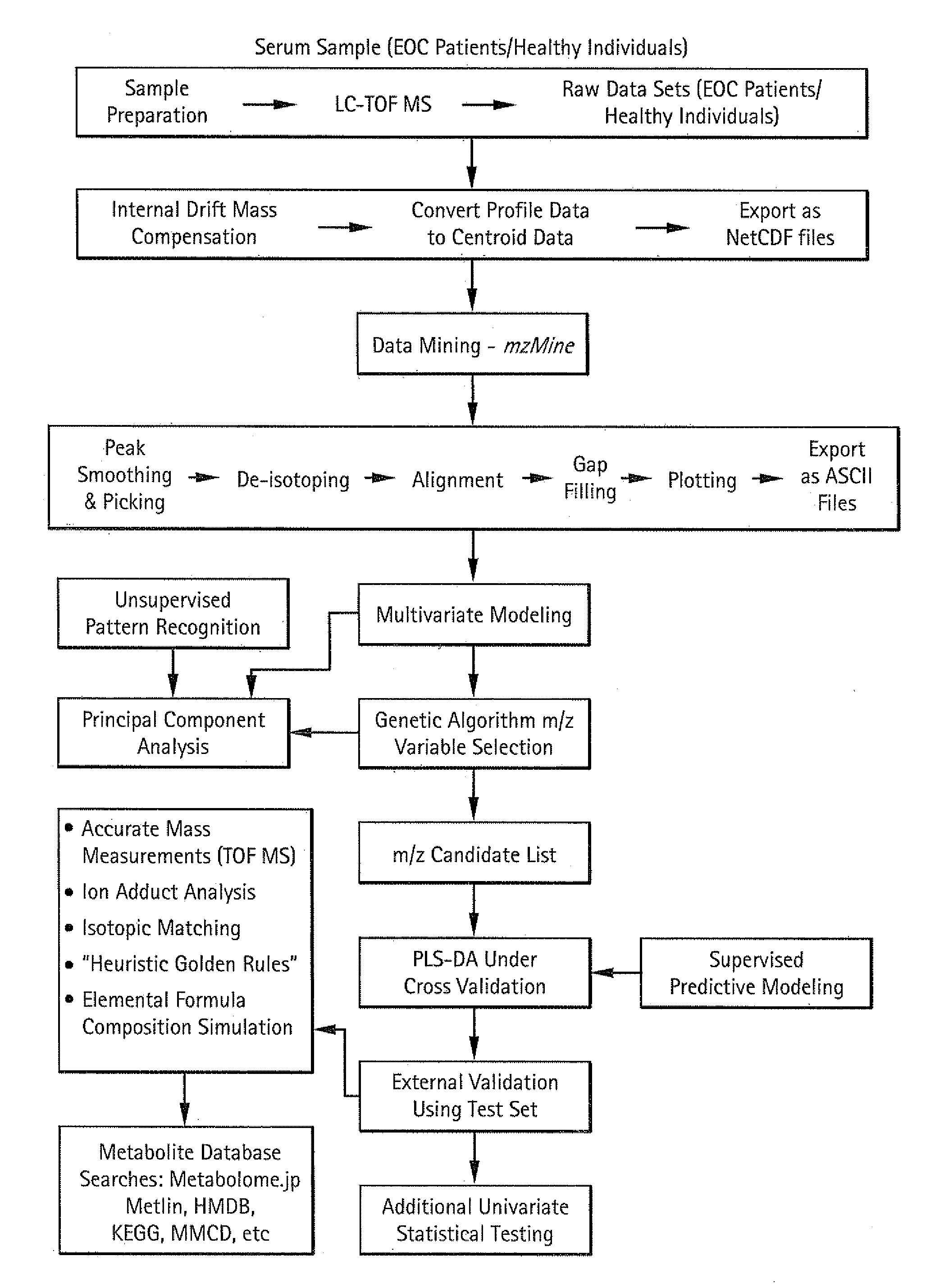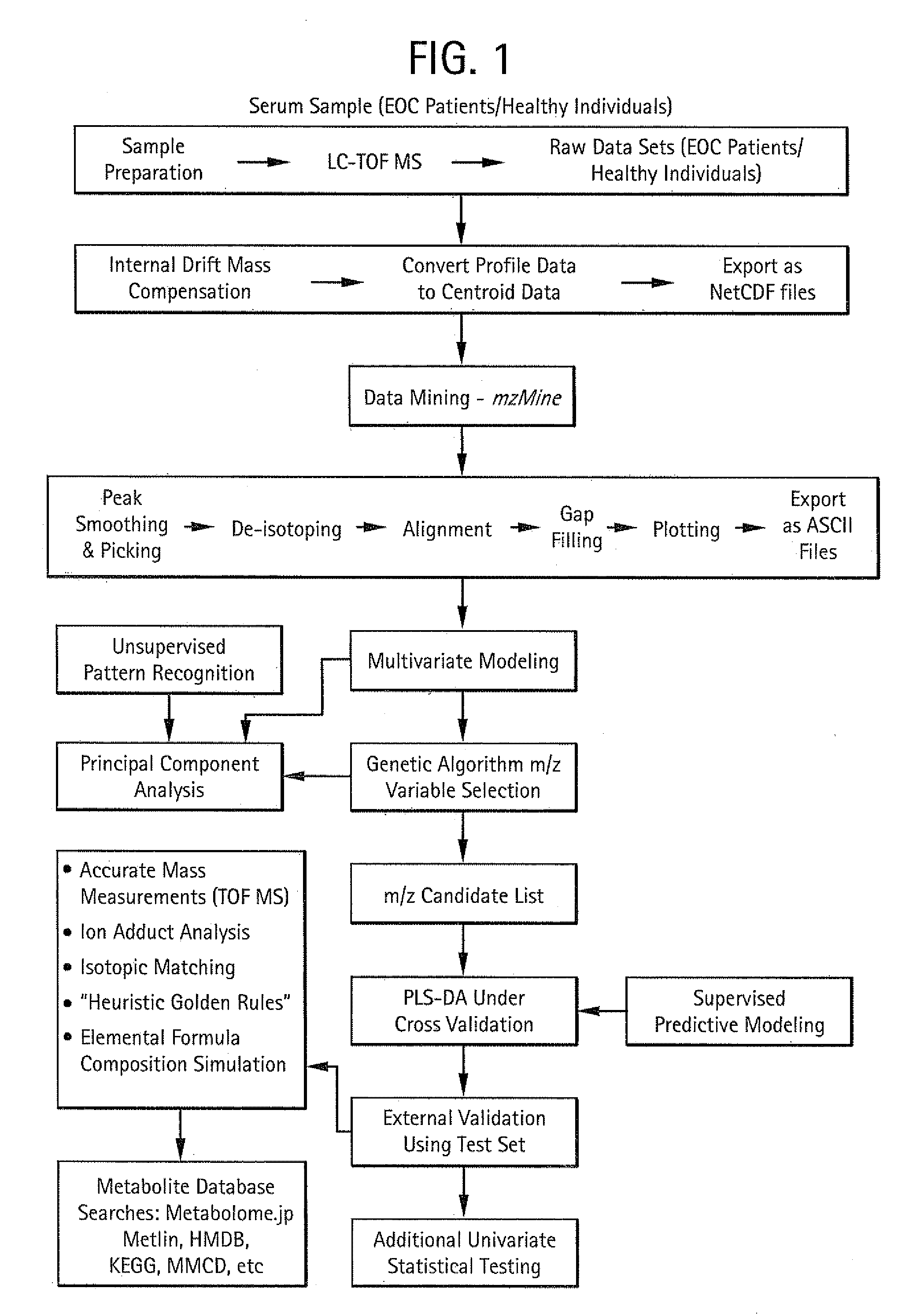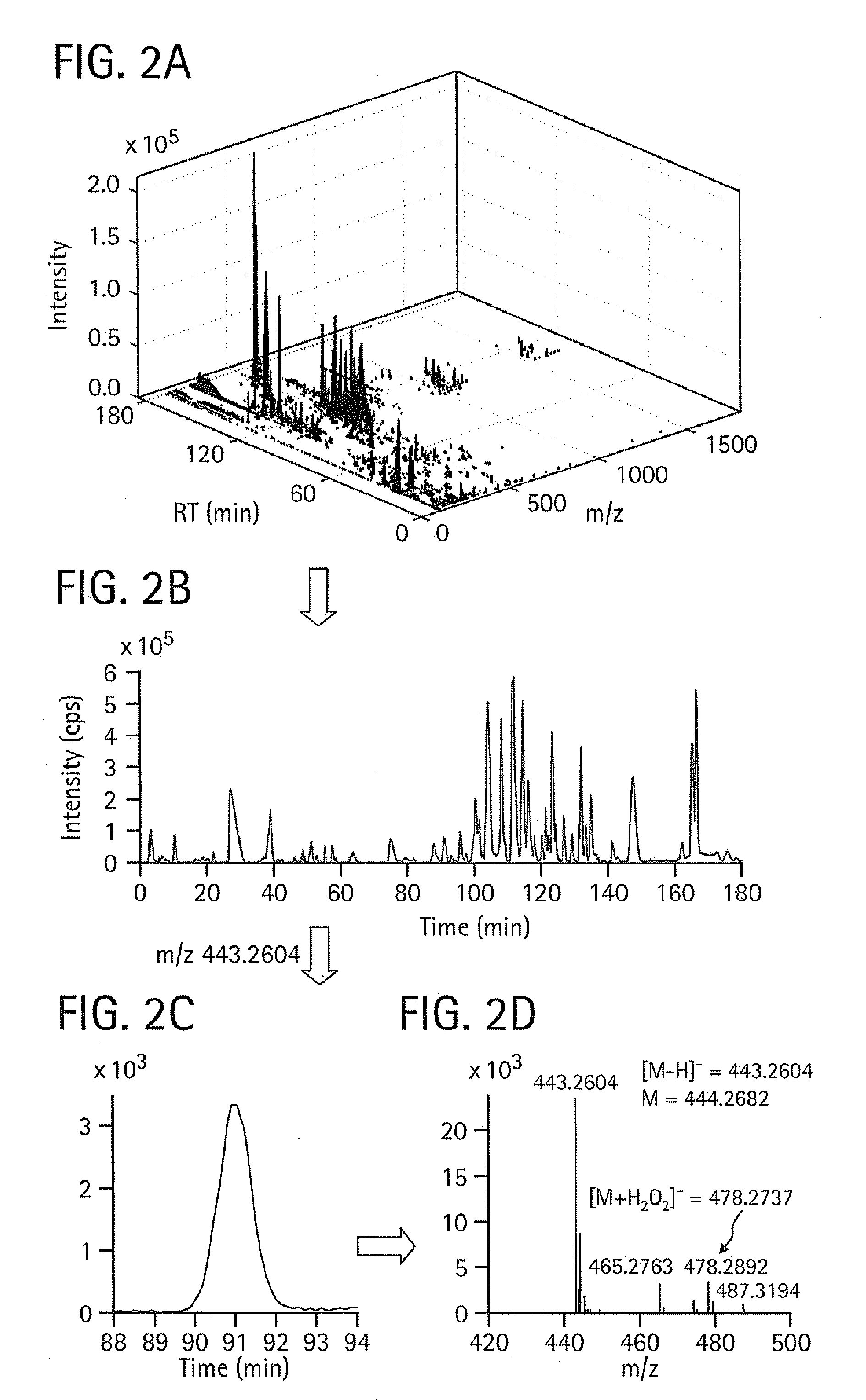Metabolic biomarkers for ovarian cancer and methods of use thereof
a biomarker and ovarian cancer technology, applied in the field of cancer biomarkers, can solve the problems of reducing the number of variables (or features) in the expression dataset, affecting the accuracy of any potential blood test for ovarian cancer, and affecting the validation of biomarkers of this kind. the effect of improving classification and machine learning classifiers
- Summary
- Abstract
- Description
- Claims
- Application Information
AI Technical Summary
Benefits of technology
Problems solved by technology
Method used
Image
Examples
example 1
Differential Serum Metabolomics of Human Ovarian Cancer by Liquid Chromatography Time-of-Flight Mass Spectrometry and Genetic Algorithm Variable Selection Coupled to Partial Least Squares-Discriminant Analysis
[0137]Materials and Methods:
[0138]Materials
[0139]Serum samples for LC / TOF MS metabolomics analysis were obtained from 37 patients with ovarian cancer (mean age 60 years, range 43-79 with different cancer stages I-IV) and 35 normal within limit (NWL) controls (mean age 54 years, range 32-84). The patients' information is detailed in Table 1.
TABLE 1Population characteristics of ovarian cancer patients and controls.Ovarian Cancer Patients (n = 37)StagesStagesI / II / Recurr.III / IVPercentageControlsCharacteristics(n = 8)(n = 29)(n = 37)(n = 35)Age (y), mean (range)60 (43-74)61 (44-79)54 (32-84)StagesI4—10.8II2—5.4III—2773.0IV—25.4Recurr.2—5.4Grades1038.121721.6351656.8Ungraded2313.5Histological TypesPapillary Serious41962.2Endometrioid115.4Others (Mixed,0616.2Transitional)Mucinous012.7...
example 2
Ovarian Cancer Detection from Metabolomic Liquid Chromatography / Mass Spectrometry Data by Support Vector Machines
[0172]Materials and Methods:
[0173]Cohort Description
[0174]Serum samples were obtained from 37 patients with papillary serous ovarian cancer (mean age 60 years, range 43-79, stages I-IV) and 35 controls (mean age 54 years, range 32-84). The control population consisted of patients with histology considered within normal limits (WNL) and women with non-cancerous ovarian conditions. The patients' information is detailed in Table 8.
TABLE 8Characteristics of ovarian cancer patients and controlsCharacteristicsStages I / IIStages III / IVControlsTotalAge (y), mean60 (43-74)61 (46-79)54 (32-84)58 (32-84)(range)Papillary serous928 037carcinomaControl0 03535
[0175]All serum samples were obtained from the Ovarian Cancer Institute (OCI, Atlanta, Ga.) after approval by the Institutional Review Board (IRB). All donors were required to fast and to avoid medicine and alcohol for 12 hours prio...
example 3
Optimization of a Direct Analysis in Real Time / Time-of-Flight Mass Spectrometry Method for Rapid Serum Metabolomic Fingerprinting
[0224]Materials and Methods:
[0225]Samples and Reagents
[0226]N-trimethylsilyl-N-methyltrifluoroacetamide (MSTFA) and trimethylchlorosilane (TMCS) were obtained from Alfa Aesar (Ward Hill, Mass.), anhydrous pyridine, acetonitrile (ACN), acetone and isopropanol were from EMD Chemicals (Gibbstown, N.J.), polyethylene glycol standard 600 (PEG 600) was from Fluka Chemical Corp. (Milwaukee, Wis.), healthy human serum (S7023—50 mL) was from Sigma-Aldrich Corp. (St. Louis, Mo.), and helium (99.9% purity) was purchased from Airgas, Inc. (Atlanta, Ga.).
[0227]Mass Spectrometry
[0228]Serum metabolomic analysis was performed in positive ion mode via a DART ion source (IonSense, Saugus, Mass.) coupled to a JEOL AccuTOF orthogonal time-of-flight (TOE) mass spectrometer (JEOL, Japan). Derivatized serum samples were placed within the ionization region using a home-built samp...
PUM
 Login to View More
Login to View More Abstract
Description
Claims
Application Information
 Login to View More
Login to View More - R&D
- Intellectual Property
- Life Sciences
- Materials
- Tech Scout
- Unparalleled Data Quality
- Higher Quality Content
- 60% Fewer Hallucinations
Browse by: Latest US Patents, China's latest patents, Technical Efficacy Thesaurus, Application Domain, Technology Topic, Popular Technical Reports.
© 2025 PatSnap. All rights reserved.Legal|Privacy policy|Modern Slavery Act Transparency Statement|Sitemap|About US| Contact US: help@patsnap.com



